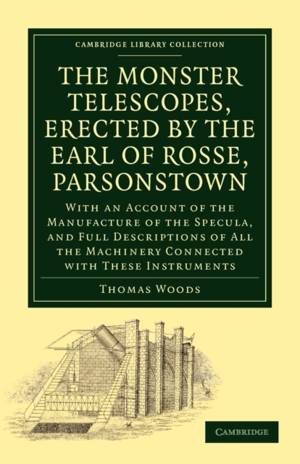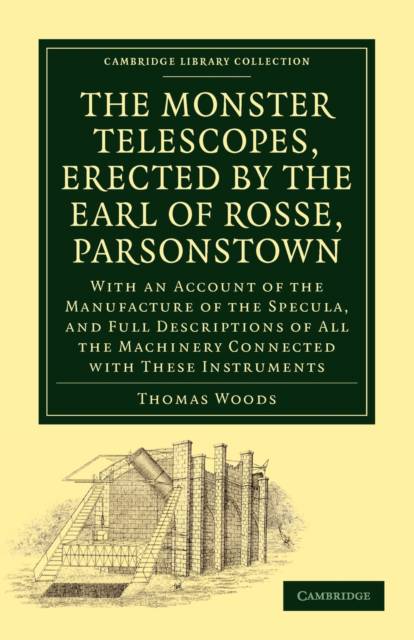
- Afhalen na 1 uur in een winkel met voorraad
- Gratis thuislevering in België vanaf € 30
- Ruim aanbod met 7 miljoen producten
- Afhalen na 1 uur in een winkel met voorraad
- Gratis thuislevering in België vanaf € 30
- Ruim aanbod met 7 miljoen producten
Zoeken
The Monster Telescopes, Erected by the Earl of Rosse, Parsonstown
With an Account of the Manufacture of the Specula, and Full Descriptions of All the
William Parsons, Parsons William, Thomas Woods
€ 57,95
+ 115 punten
Omschrijving
William Parsons (1800-67), third earl of Rosse, was responsible for building the largest telescope of his time, nicknamed the 'Leviathan'. It enabled the earl to describe the spiral structure of galaxies. This volume reissues two contemporary accounts of the telescope. The first, published anonymously in 1844 and later revealed to be by Thomas Woods, provides a comprehensive description of the workings of both the 'Leviathan' and the smaller telescope which preceded it, with detailed accounts of the construction of both telescopes. The second, by another anonymous author, first appeared in the Dublin Review in March 1845, and outlines the history and problems of telescope manufacture from Galileo onwards. Together with a short account from 1842 of the Armagh observatory by its director, these works situate the telescopes, and the difficulties the earl faced during the eighteen years he took to build the 'Leviathan', in their wider context.
Specificaties
Betrokkenen
- Auteur(s):
- Uitgeverij:
Inhoud
- Aantal bladzijden:
- 162
- Taal:
- Engels
- Reeks:
Eigenschappen
- Productcode (EAN):
- 9781108013758
- Verschijningsdatum:
- 31/10/2010
- Uitvoering:
- Paperback
- Formaat:
- Trade paperback (VS)
- Afmetingen:
- 140 mm x 216 mm
- Gewicht:
- 213 g

Alleen bij Standaard Boekhandel
+ 115 punten op je klantenkaart van Standaard Boekhandel
Beoordelingen
We publiceren alleen reviews die voldoen aan de voorwaarden voor reviews. Bekijk onze voorwaarden voor reviews.











